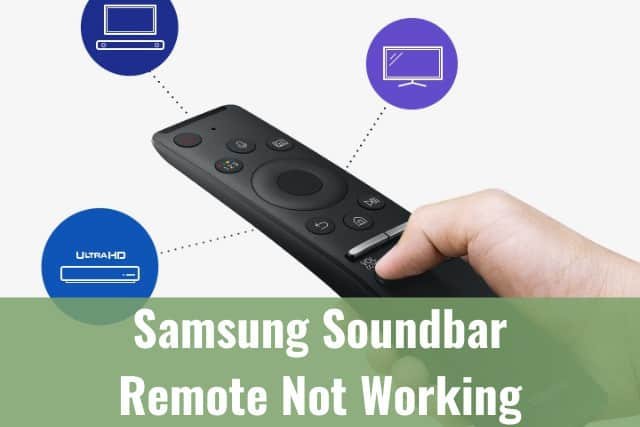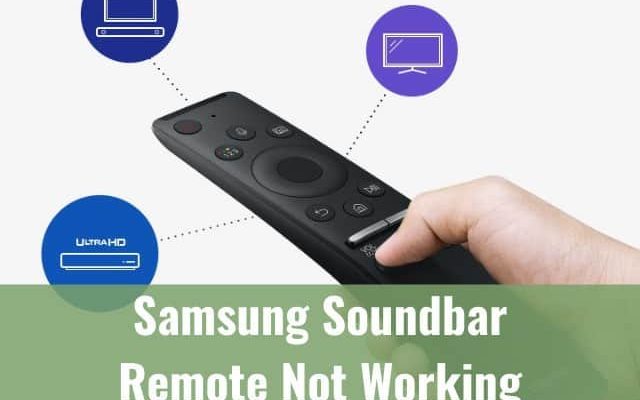
Here’s the thing: programming a Samsung soundbar remote *should* be simple—but the process trips up so many people. Maybe you’re not sure about the right pairing method. Maybe the batteries have been quietly dying for weeks. Or maybe the remote just decided today is not the day it wants to cooperate. If you’ve ever felt like you needed a computer degree just to sync your remote, you are in good company.
So let’s break down what actually goes wrong, why these remotes can be fussy (spoiler: it’s not always your fault), and how to sidestep the most common pitfalls. I’ll guide you through the big mistakes, with a little extra context so you don’t have to go through a weeklong Google rabbit hole just to hear your favorite show.
Forgetting to Check the Batteries First
You know that classic sitcom trope where someone’s convinced the TV is broken, only to realize it’s unplugged? This is the *remote control* version of that. The most common, facepalm-worthy mistake people make with Samsung soundbar remotes is skipping the battery check before programming or pairing.
A lot of us assume a remote is “working” just because an LED blinks, but weak batteries can mean the remote *sort of* works—it lights up, maybe a button or two responds, but not enough for the full sync or pairing to happen reliably. Imagine trying to have a conversation with someone who’s whispering in a noisy room; sometimes you catch what they’re saying, sometimes you don’t. That’s how your soundbar feels about low remote batteries.
Here’s my advice: **always pop in a fresh set of batteries first**. Don’t trust the ones that have been rolling around in your junk drawer since 2016. And if you haven’t changed them in a while, do it before you even *think* about troubleshooting codes or pairing. It’s such a silly step to skip, but honestly, it solves more problems than you might expect.
Mixing Up the Programming Codes
Let me explain: Samsung soundbar remotes sometimes need a specific code to “talk” to your TV or another device. This is where so many people stumble—either by using the wrong code, confusing codes for other brands, or not realizing their soundbar model might require a newer set of codes than what’s in the old-school paper manual.
Here’s the deal: those little code sheets look straightforward, but it’s shockingly easy to grab the wrong number, especially if you’re programming multiple devices (TV, cable box, streaming stick, etc.). Sometimes, Samsung updates their devices and the old code doesn’t even work anymore. I once spent an hour trying to sync an old Samsung soundbar with a friend’s fancy new TV before realizing the “official” code from five years ago was now outdated.
Always double-check you have the right brand and most up-to-date code. Samsung’s support site usually has the latest list. And watch out for typos! Mistyping even one number can leave you wondering why nothing’s connecting. Go slow, and write it down if you need to. This step trips up more people than you’d think.
Not Completing the Pairing Process Properly
You might be wondering: what does “pairing” even mean here? It’s basically telling your soundbar remote and your device, “Hey, let’s be best friends.” But if you get distracted or miss a step—maybe you let go of a button a second too early, or you don’t wait for the right light to flash—it can scuttle the whole process.
Usually, pairing with a Samsung soundbar remote means you have to press and hold a specific button combo (like “Power” and “Volume Up”) until an LED starts blinking. Then, you enter your code, and hope for that beep or light that means success. Here’s the catch: if you move too fast, or not fast enough, or you let go before the LED blinks, you’re right back where you started. It’s like trying to do a secret handshake when you only half-remember the moves.
If you’re not absolutely sure the pairing sequence went through, do it again—slowly. Watch for the lights. Listen for the beeps. Go step by step. It’s much less frustrating to double-check than to spend an hour troubleshooting a simple timing error.
Overlooking the “Reset” Option
Sometimes you just need a clean slate. Maybe you’ve tried every code, mashed every button, and none of it worked. You know what I wish someone had told me sooner? A *full remote reset* is often the magic fix.
Resetting a Samsung soundbar remote usually means holding down a certain combo of buttons (like Power + Play/Pause) for several seconds, until the remote’s LED flashes wildly. What this does is erase any weird, half-programmed settings or half-finished sync attempts that might be confusing the remote.
It’s a bit like restarting your phone when it gets buggy. You clear out the cobwebs, and suddenly stuff works again. Samsung doesn’t always spell this out in the manual, but trust me: if you’re stuck, try the reset before you throw the remote (or your TV) out the window.
Ignoring Line-of-Sight and Interference Issues
Remotes don’t have psychic powers—most still need a clear, unobstructed path to your soundbar’s sensor. If you’re programming or pairing, but there’s a pile of books, a plant, or even just sunlight in the way, the remote’s infrared signal might not reach its target.
Here’s a quick example: I once tried to pair a Samsung soundbar remote while my dog was lying right in front of the soundbar, tail wagging, thoroughly enjoying the attention. Guess what? The remote wouldn’t sync. Moved the dog—instant success. So, always check the path between your remote and your soundbar.
Other culprits? Sunlight can sometimes “blind” the sensor, and other electronics (like Wi-Fi routers or microwaves) might cause interference, especially during programming. If you’re troubleshooting, always move closer, and make sure there’s nothing blocking your way.
Assuming All Remotes Work the Same Way
Not all remotes are built equal. Samsung soundbar remotes have their quirks and their own little routines—*especially compared to universal remotes* or older models. If you try to program one like you would a generic universal remote, you might just end up more confused.
Samsung’s remotes are usually designed to pair with their brand’s soundbars and TVs, but not every model supports advanced features like HDMI-CEC, Bluetooth pairing, or learning other device codes. A universal remote, on the other hand, might require extra steps or even different codes entirely. So, if you’re not sure, always check the model number and look up the specific instructions.
If your remote is lost or busted, consider whether you really need a *Samsung-branded* replacement or if a high-quality universal remote could do the trick. Universal remotes are great in theory, but sometimes they can’t do everything the original remote can. Personally, I’ve had fewer headaches with the brand’s own remotes—but your mileage may vary.
Skipping the Soundbar Firmware Updates
Okay, this one’s a little more technical, but it matters. Did you know your Samsung soundbar actually has firmware, just like your phone? Sometimes, pairing glitches or code mismatches are actually a problem with outdated software on the *soundbar itself*—not the remote.
Samsung occasionally releases firmware updates that fix bugs, add features, or make pairing more reliable. If you’re running into weird programming issues, it’s worth checking if your soundbar supports updates (usually via USB or Samsung’s SmartThings app). Updating the firmware can sometimes fix mysterious remote problems in one go.
It’s not always the first thing you think of, but keeping your devices updated makes for a smoother remote control experience overall. Plus, you might even pick up cool new features along the way.
Troubleshooting Without a Systematic Approach
Ever feel like you’ve tried *everything* but nothing’s working? You check the code, swap the batteries, reset the remote, wave it around like a magic wand… and still no luck. Here’s an honest tip: a lot of troubleshooting fails because we try random fixes instead of following a logical, step-by-step process.
Here’s what I do now:
- Check and replace batteries first.
- Make sure there’s a clear line-of-sight to the soundbar.
- Find the latest programming code for your exact model.
- Try pairing again, slowly, following each step carefully.
- If it fails, do a full remote reset, and try again.
- As a last resort, update the soundbar firmware.
Taking it one step at a time—without skipping ahead—helps you catch simple errors you might have missed. It also keeps you from getting overwhelmed and giving up too soon.
Programming your Samsung soundbar remote shouldn’t feel like hacking into the Pentagon. Go slow, focus on the basics, and trust that, usually, the answer is simpler than it seems.
Final Thoughts: Take a Breath, You’ve Got This
Honestly, the most common programming mistakes with Samsung soundbar remotes aren’t about being “bad with technology.” They’re just little oversights, the kind anyone can make when you’re eager to get the sound working. It’s easy to forget about batteries, or mix up codes, or get tripped up by a missed step during pairing. But once you understand what’s happening behind the scenes—and give yourself permission to slow down—the process feels way less intimidating.
If you hit a wall, remember: you’re not alone, and even the most tech-savvy folks sometimes stare at a remote in defeat. Start with the basics, follow the steps, and don’t be afraid to ask for help or check Samsung’s support. Your soundbar and remote *want* to get along—they might just need a little nudge (and maybe a fresh battery or two) to make it happen.
Now go enjoy that movie night, with the remote drama behind you.
